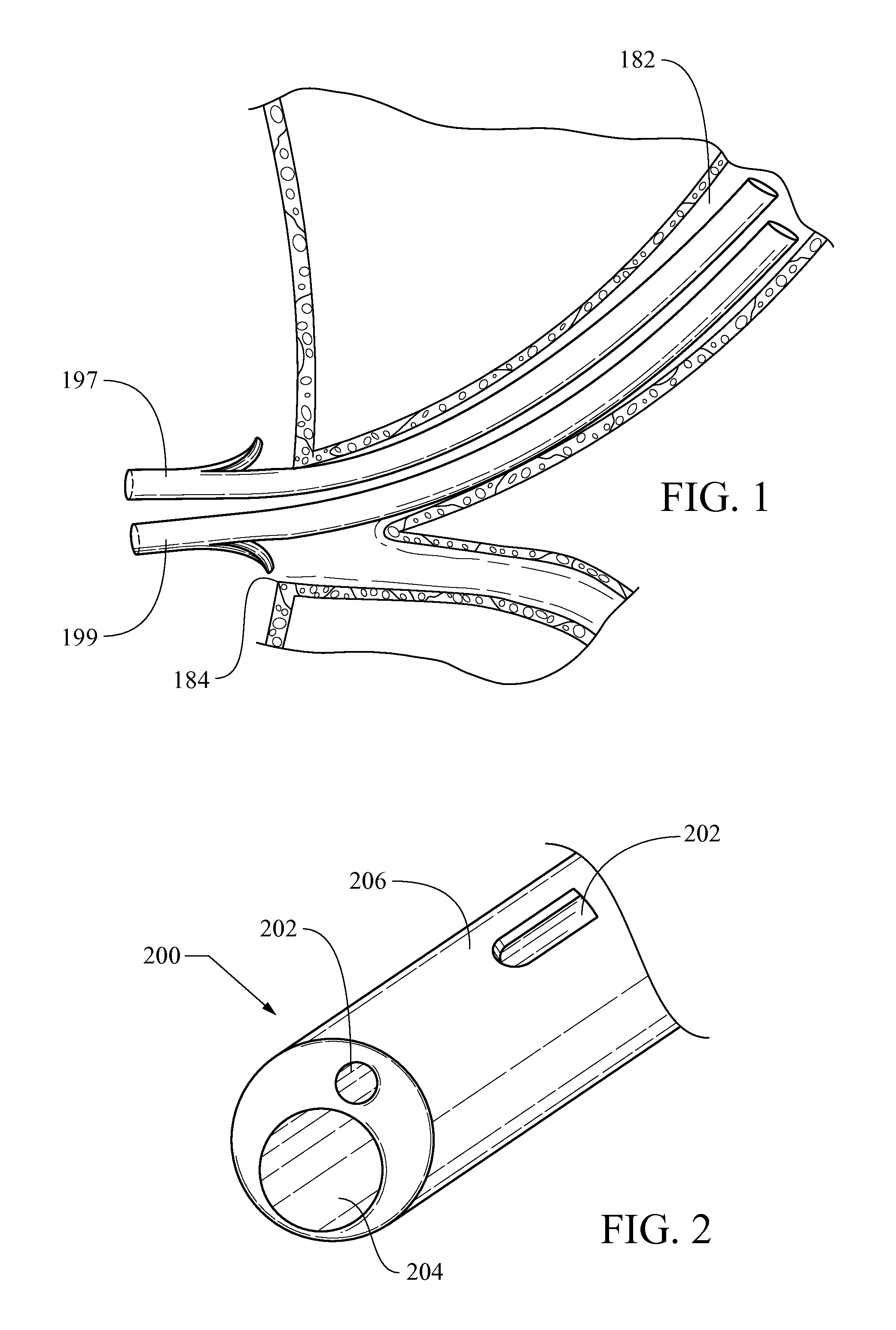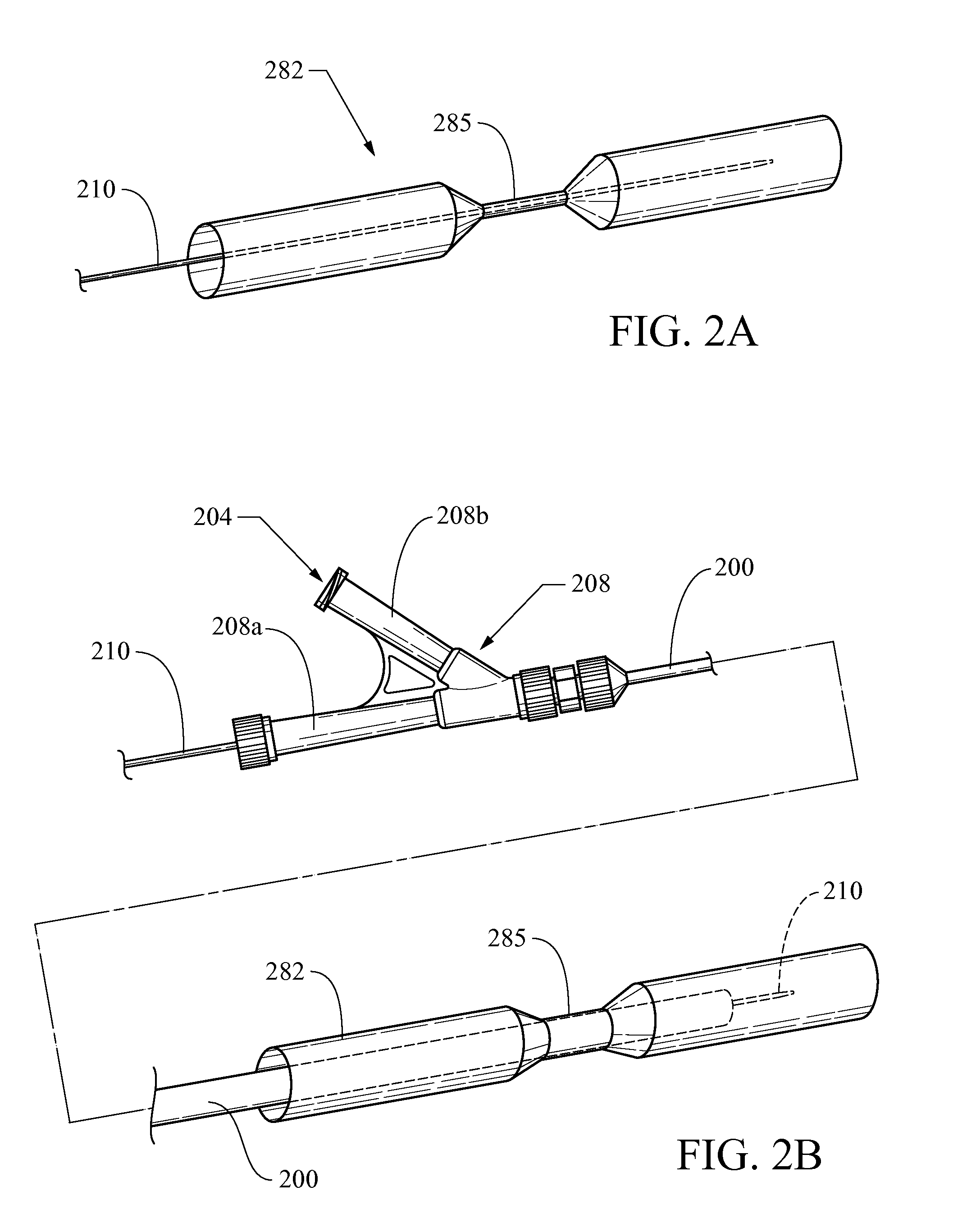Method of placing multiple biliary stents without re-intervention, and device for same
a bile duct and stent technology, applied in the field of multiple bile duct stent placement methods and devices, can solve the problems of increasing the procedural complexity, difficult direct cannulation of stents preloaded on stent-delivery catheters without prior insertion of wire guides, and difficult to achieve the effect of reducing the risk of re-intervention
- Summary
- Abstract
- Description
- Claims
- Application Information
AI Technical Summary
Benefits of technology
Problems solved by technology
Method used
Image
Examples
Embodiment Construction
[0015]As used in the specification, the terms proximal and distal should be understood as being from the perspective of a physician operating a device embodiment and method herein for delivering a stent to a patient. Hence, the term “distal” means the portion of the delivery system that is farthest from the physician and the term “proximal” means the portion of the delivery system that is nearest to the physician. Also, as used herein unless otherwise specified, the term “end” refers to a region at and near a proximal or distal terminus, while the word “terminus” is used to refer to the absolute ends of the device defining where its construction ceases.
[0016]Embodiments are described with reference to the drawings in which like elements are generally referred to by like numerals. The relationship and functioning of the various elements of the embodiments may better be understood by reference to the following detailed description. However, embodiments are not limited to those illustr...
PUM
 Login to View More
Login to View More Abstract
Description
Claims
Application Information
 Login to View More
Login to View More - R&D
- Intellectual Property
- Life Sciences
- Materials
- Tech Scout
- Unparalleled Data Quality
- Higher Quality Content
- 60% Fewer Hallucinations
Browse by: Latest US Patents, China's latest patents, Technical Efficacy Thesaurus, Application Domain, Technology Topic, Popular Technical Reports.
© 2025 PatSnap. All rights reserved.Legal|Privacy policy|Modern Slavery Act Transparency Statement|Sitemap|About US| Contact US: help@patsnap.com



